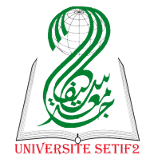| Titre : |
Lexical Grammar Activities for Teaching Chunks and Exploring Patterns : Cambridge Handbooks for Language Teachers |
| Type de document : |
texte imprimÃĐ |
| Auteurs : |
Leo Selivan |
| Editeur : |
United kingdom : Cambridge university press |
| AnnÃĐe de publication : |
2018 |
| Importance : |
233 p. |
| PrÃĐsentation : |
cov. ill |
| Format : |
25 x 19 cm |
| ISBN/ISSN/EAN : |
978-1-316-64475-1 |
| Langues : |
Anglais (eng) Langues originales : Anglais (eng) |
| Mots-clÃĐs : |
grammar/english |
| RÃĐsumÃĐ : |
This book is for anyone is interested in the relationship between grammar and vocabulary. The introduction looks at recent developments in corpus linguistics and second language acquisition research, and outlines the important role which chunks play in textual cohesion and in fluency, as well as in grammar acquisition. The practical part of the book provides practitioners with a large number of classroom suggestions and activities for making grammar teaching more lexical, and for making vocabulary practice more grammatical. Activities move from receptive to productive and can be used on their own or to supplement and enhance coursebook content. |
Lexical Grammar Activities for Teaching Chunks and Exploring Patterns : Cambridge Handbooks for Language Teachers [texte imprimÃĐ] / Leo Selivan . - United kingdom : Cambridge university press, 2018 . - 233 p. : cov. ill ; 25 x 19 cm. ISBN : 978-1-316-64475-1 Langues : Anglais ( eng) Langues originales : Anglais ( eng)
| Mots-clÃĐs : |
grammar/english |
| RÃĐsumÃĐ : |
This book is for anyone is interested in the relationship between grammar and vocabulary. The introduction looks at recent developments in corpus linguistics and second language acquisition research, and outlines the important role which chunks play in textual cohesion and in fluency, as well as in grammar acquisition. The practical part of the book provides practitioners with a large number of classroom suggestions and activities for making grammar teaching more lexical, and for making vocabulary practice more grammatical. Activities move from receptive to productive and can be used on their own or to supplement and enhance coursebook content. |
|  |
 Accueil
Accueil


 Affiner la recherche
Affiner la recherche


